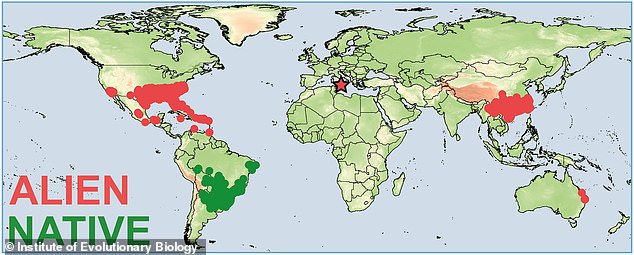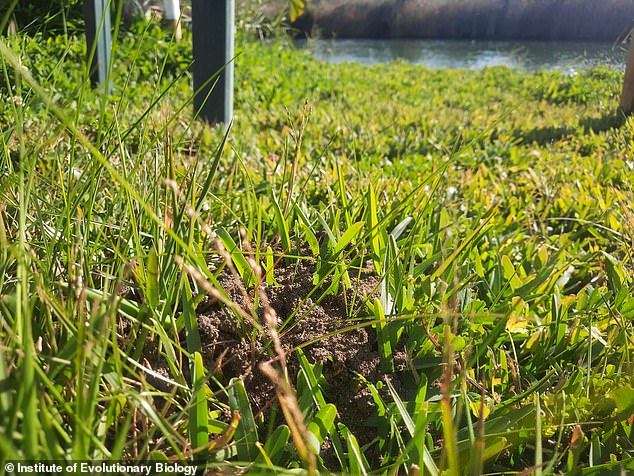A plague of red fire ants could soon sweep the UK: invasive insects that cause painful stings and pustules are seen for the first time in Europe
>
A new study warns that a plague of red fire ants – described as ‘one of the most invasive species in the world’ – could soon sweep Britain.
Although the species is native to South America, it has been spotted for the first time in Europe, raising fears that it could quickly spread across the continent.
The sting is painful and can cause unpleasant pustules and allergic reactions, possibly leading to anaphylactic shock.
Scientists are now calling on the public to help limit the spread of the insect.
“Citizens can play a very important role in this,” says Mattia Menchetti of the Institute of Evolutionary Biology in Spain. ‘We hope that with their help we can cover a larger area. This will help us track and discover any possible invaded areas in the region.”
A plague of red fire ants – described as ‘one of the most invasive species in the world’ – could soon overrun Britain, a new study warns

In addition to Europe (red star), it has already established itself in Australia, China, the Caribbean, Mexico and the US.
The red fire ant, or Solenopsis invicta, was spotted in Sicily, marking the first time it had been officially sighted in Europe.
‘S. invicta is one of the worst invasive species,” Mr Menchetti said.
‘It can spread alarmingly quickly. Finding this species in Italy was a big surprise, but we knew this day would come.”
The fiery name comes from the painful stings that pustules can leave on victims.
The creature originated in South America but has spread rapidly through a variety of methods, including flying upwind, through maritime trade, and by shipping plant products.
In addition to Europe, it has already established itself in Australia, China, the Caribbean, Mexico and the US.
“There are a large number of non-native ant species in Europe at the moment, and the absence of this species was something of a relief,” says Mr Menchetti.
‘For decades, scientists have feared that this would happen. We couldn’t believe our eyes when we saw it.’
The team was informed of the ants’ arrival in Sicily and decided to travel there to see them for themselves.
Their tests revealed 88 nests in an area of 4.7 hectares, some of which house thousands of ants.

The fiery name comes from the painful stings that pustules can leave on victims

The team was alerted that the ants had arrived in Sicily (pictured) and decided to travel there to see them for themselves
And it doesn’t appear the insects are new to the area, as many locals report being stung regularly for years.
“Locals have been experiencing these painful things since 2019, so the ants have probably been there for a while,” Menchetti said.
“And the actual size of the area invaded is probably larger.”
To understand how the species ended up in Sicily, the team analyzed the queen ants’ DNA and compared it to the genomes of ants from around the world.
This showed that this specific population came from the US or China.
Now that the ants are in Italy, the researchers have created a model to predict where the species will spread next.
According to the model, seven percent of the European continent is suitable for the species, and this figure will increase further thanks to climate change.
Urban areas are particularly at high risk of infections, with 50 percent of European cities vulnerable – including London.
“This is especially concerning because many cities, including London, Amsterdam and Rome, have large seaports, allowing the ants to quickly spread to more countries and continents,” said Roger Vila, a senior author of the study.

According to the model, seven percent of the European continent is suitable for the species, and this figure will only increase thanks to climate change.
The only country to successfully eradicate red fire ants is New Zealand, and the researchers argue that Europe should base its own interventions on what has worked there.
Initially, scientists will inspect local areas to see if the species has already reached them.
They will then begin a multi-year treatment plan to eradicate the nests and monitor the invaded sites to ensure there are no resurgences.
The team also says citizens can do their part by taking photos if they think they have found ants.
“There needs to be more awareness about this problem because it is already happening in Europe,” Mr Menchetti concluded.
“We need coordinated action, and we need it now.”

